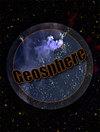Spatiotemporally heterogeneous deformation, indirect tectonomagmatic links, and lithospheric evolution during orogenic activity coeval with an arc flare-up
IF 1.7
3区 地球科学
Q3 GEOSCIENCES, MULTIDISCIPLINARY
引用次数: 0
Abstract
Broad overlap between deformation and magmatism in active margins has spurred the development of a conceptual framework of direct tectonomagmatic links in both active and ancient arcs. Although widespread and highly influential, such models have only rarely been critically evaluated. Rigorously linking tectonism, geodynamics, lithospheric evolution, and arc activity requires detailed reconstructions of the spatiotemporal patterns of magmatism and deformation across both a sufficiently wide area and a range of observational scales. Herein, new constraints on the timing, extent, and characteristics of deformation during mid-Cretaceous tectonism in the central Sierra Nevada (eastern California, USA) are synthesized with published geologic mapping, structural studies, and geochronology to create an updated reconstruction of one of the type examples of a hot, magma-rich orogen. Tilted strata, tectonic fabrics, and shear zones with variable geometries, kinematics, intensity, and timing reveal a significantly revised record of ~25 m.y. of heterogeneous deformation ca. 105–80 Ma. Deformation and magmatism show distinct and unrelated spatiotemporal patterns throughout this orogenic episode. Contrary to previous models of direct tectonomagmatic links, many of which were developed in the central Sierra Nevada, arc activity did not control the location, intensity, or kinematics of intra-arc deformation, nor did shear zones control the location of magmatism. Furthermore, arc lithosphere appears to have strengthened, rather than weakened, as the arc-orogenic flare-up proceeded. In addition to changing plate-scale boundary conditions, lithospheric-scale rheological evolution likely played a key role in the patterns of Late Cretaceous deformation observed across strike of the entire Cordilleran margin.造山活动期间的时空非均质变形、间接构造岩浆联系和岩石圈演化与弧爆发同时发生
活动边缘的变形和岩浆作用之间的广泛重叠促进了活动弧和古代弧中直接构造-岩浆联系的概念框架的发展。尽管这类模型广泛且具有高度影响力,但很少受到批判性评价。将构造作用、地球动力学、岩石圈演化和弧活动严格联系起来,需要在足够宽的区域和一系列观测尺度上详细重建岩浆作用和变形的时空模式。在此,将内华达山脉中部(美国加利福尼亚州东部)白垩纪中期构造运动期间变形的时间、程度和特征的新约束条件与已发表的地质测绘、结构研究和地质年代学相结合,以创建一个热的、富含岩浆的造山带的典型例子的最新重建。具有可变几何形状、运动学、强度和时间的倾斜地层、构造组构和剪切带揭示了约25 m.y.的非均匀变形记录。105-80Ma。在整个造山期,变形和岩浆作用显示出不同且不相关的时空模式。与之前的直接构造-岩浆联系模型相反,弧活动并不控制弧内变形的位置、强度或运动学,剪切带也不控制岩浆作用的位置。此外,随着弧造山爆发的进行,弧岩石圈似乎已经增强,而不是减弱。除了改变板块尺度的边界条件外,岩石圈尺度的流变演化可能在整个科迪勒兰边缘走向上观察到的晚白垩世变形模式中发挥了关键作用。
本文章由计算机程序翻译,如有差异,请以英文原文为准。
求助全文
约1分钟内获得全文
求助全文
来源期刊

Geosphere
地学-地球科学综合
CiteScore
4.40
自引率
12.00%
发文量
71
审稿时长
6-12 weeks
期刊介绍:
Geosphere is GSA''s ambitious, online-only publication that addresses the growing need for timely publication of research results, data, software, and educational developments in ways that cannot be addressed by traditional formats. The journal''s rigorously peer-reviewed, high-quality research papers target an international audience in all geoscience fields. Its innovative format encourages extensive use of color, animations, interactivity, and oversize figures (maps, cross sections, etc.), and provides easy access to resources such as GIS databases, data archives, and modeling results. Geosphere''s broad scope and variety of contributions is a refreshing addition to traditional journals.
 求助内容:
求助内容: 应助结果提醒方式:
应助结果提醒方式:


